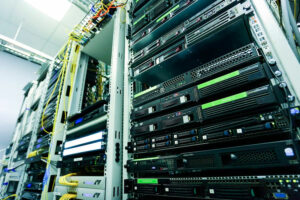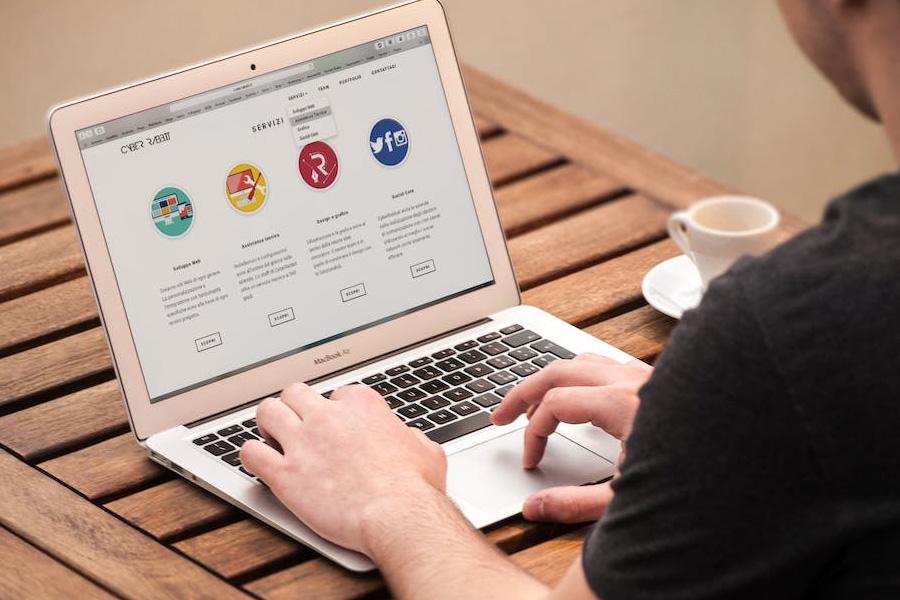Getting people to visit your website is only half the battle. The real challenge? Turning…
Website Carbon Footprint – What to Think About…

When considering your website carbon footprint as a business, your website is potentially a key contributor to your carbon footprint. The internet requires a substantial amount of electricity. the global annual usage is roughly 416.2TWh – which is equivalent to the entire United Kingdom’s electrical usage.
With all of the data centres, transmission networks and devices that we use during the day, it’s no wonder it consumes a lot of electricity. With this huge decrease in energy efficiency comes increased carbon emissions and what can only be described as a considerable: net impact on our environment. On average, it is reported that each web page generates around 0.5 grams of CO2 for every 10,000 monthly page views. That’s 60 kgs of carbon dioxide every year!
 One of the biggest polluters today is our digital footprint. How we use products on a daily basis produces significant amounts of pollution. Whether or not it feels like it, every action we take has an effect on the environment. As the internet continues to grow and usage increases, the world is starting to look at website owners to ensure that the impact on the environment is considered and limited.
One of the biggest polluters today is our digital footprint. How we use products on a daily basis produces significant amounts of pollution. Whether or not it feels like it, every action we take has an effect on the environment. As the internet continues to grow and usage increases, the world is starting to look at website owners to ensure that the impact on the environment is considered and limited.
Every time someone visits your website, it will consume a small amount of electricity. For example, whenever a browser makes an HTTP request for information on your server. Your browser needs to process data and make a request. Your server needs to use energy to process it and send the appropriate information back. The more often your browser requests data or your server responds, the more energy is needed on both sides. Energy can be increased by using battery life faster or by adding in an external power source that links into your internet connection. The amount of energy your website is consuming, as a result, may seem minimal, but once we look at the larger picture the energy consumption soon mounts up.
Website Carbon and Hosting
If you have a website, you need a hosting provider to store your files and data. A common option is to find a company with data centres where they store the files and information of all their customers.
These data centres contain thousands of computers and are cooled using complex systems that operate 24 hours a day.
The larger data centres produce higher carbon footprints, not all data centres are the same. Factors like size, technology and infrastructure can affect the total energy consumption. Some data centres use more energy than others, and as a result, are not always the best for the environment. It is important to choose a hosting provider with some green credentials and an active eye on the impact their services may have on the environment.
Bots
Bot traffic means anything non-human on a website or an app. 40% of the total traffic in 2022 is from bots and it’s worth looking at how your content looks to them too. Similar to when customers come to your site, bots also make requests that need to be processed. There’s no difference in terms of environmental impact whether it’s a human or a bot that visits you site.
What can you do?
Check your website’s carbon footprint.
Take a look at what the carbon footprint of your website is, Click here.
According to the website carbon calculator, on average websites produce around 0.5 grams of CO2 per pageview they serve. This adds up to 60 kg of CO2 per year when you have 10 thousand monthly pageviews. How does your website compare to the average?
Green Providers
One way to minimise the environmental impact of your website is to use a “green” hosting company. These are providers using data centres that are high in efficiency and who are committed to using sustainable energy sources. You can check where they rank on The Green Web Foundation’s directory. Their directory lists over 500 hosting providers worldwide that have a tangible commitment to the use of green energy.
 Reduce your Media Size
Reduce your Media Size
The more images and media you upload and the larger the media, the more data is transferred. As a result, this will also mean that more energy will be used in the process. Take a moment to look at your media weight on your website and explore where you can reduce the volume or size of the media.
With these initial considerations, you will reduce your carbon footprint today. Some aspects of this goal might be unattainable on a day-to-day basis, but investing in our future and the preservation of the environment is critical to our continued existence as humans. We firmly believe that if you are actively trying to reduce your carbon footprint as a business, these small adjustments will make a difference. If well all made a conscious effort to improve the carbon output of our digital space, we will make a huge difference collectively.
We are able to support all of our customer’s goals online, including the environmental impact of a digital project. If this is a key consideration for you and your business, get in touch with us now and see what we can do to help build a better environmental future.


